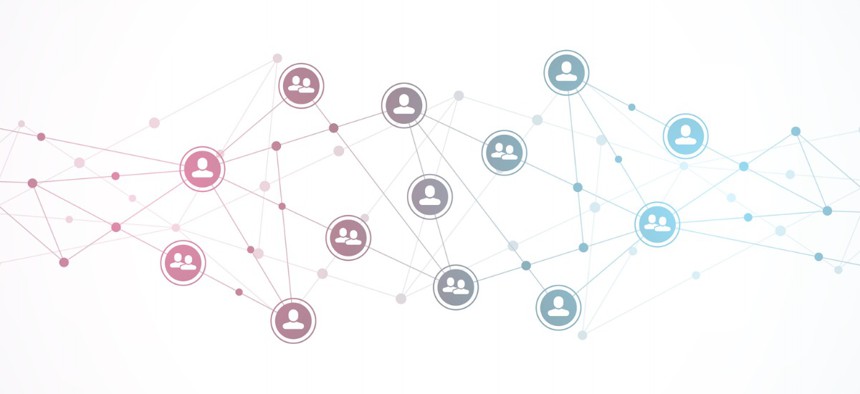5 Post-Pandemic Federal Telecom Trends

kingwin/istockphoto.com
The past year and a half of telework and remote service delivery have accelerated the impact of the government's digital transformation efforts.
The federal government IT industry has made great strides over the last few decades to serve constituents better, embracing new technologies that improve service efficiency and reliability. But there is still a lot to accomplish. Several factors continue to push the government’s digital transformation efforts dutifully forward, and the past year and a half of telework and remote service delivery have accelerated their impact.
As federal agencies begin to emerge from the pandemic, here are five trends that are influencing network modernization efforts across the government.
1. More Telework
In the past year and a half, we learned plenty about how technology enables remote work and collaboration. New developments and innovations have allowed all of us to achieve more than we ever thought possible. We saw how the private sector adapted in 2020 with new strategies like curbside pickup and collaborative video conferencing. So, too, did government agencies, where service delivery was once defined by in-person, location-dependent procedures bound by traditional methods. We found that remote work can work. This insight will necessitate changes in how the government will connect, manage and support these new agency “sites” (a.k.a. government workers’ homes). Will remote government employees become their help desks? How will it impact their productivity, and ultimately, on-service delivery? How do they connect and work when their residential service provider tells them their replacement router will get there in three days?
2. Service Providers vs. Carriers?
The Enterprise Infrastructure Solutions (EIS) contract has, for the first time in the history of the long-tenured General Services Administration network services deals, awarded service providers that are not traditional telecom carriers. Agencies’ decisions to diversify network vendor types will bring about new services, more options and competitive best-of-breed solutions to the government market. More competition will be beneficial for agencies.
3. The Burden of Choice
On the flip side, the EIS program also presents several challenges by including nine awarded companies. The government previously awarded GSA network services contracts to two or three vendors or a maximum of five. Agencies today are presented with up to nine competing bids in response to every “Fair Opportunity” solicitation. Do the math: nine proposals, nine evaluations, up to nine negotiations and possibly eight award protests. The process places a strain on agency personnel tasked with running their current networks at the same time. Meanwhile, the clock is ticking on transition timelines. These awards take a long time. I’m not suggesting that nine awardees was the wrong move, but it is different from past contracting vehicles. The pandemic didn’t make this extra “burden of choice” any easier.
4. Like-for-Like
The EIS RFP was released during a transition period when services available on the previous FTS 2001 and Networx contracts were still the prevailing technologies. When EIS was developed, the use of newer broadband services did not meet the necessary network security needs of the federal government. Consequently, most of the early agency-issued Fair Opportunities specified continued legacy or “like-for-like” services such as MPLS and a dependence on costly dedicated access service, which is neither scalable nor effective in today’s environment. This approach does not yield the type of innovation and network modernization needed for efficient government service delivery. However, as broadband services have evolved to include managed broadband and Software Defined-Wide Area Network (SD-WAN) technologies with stricter security capabilities, GSA has worked hard to incorporate them into the EIS master contract. That said, the unfortunate timing gap puts a strain on meeting transition goals.
5. AIOps
With the development of Artificial Intelligence (AI) as a component of network operations, the management and performance of dispersed networks have taken a giant step forward. As this performance optimization technology continues to evolve, the industry is moving closer to service delivery platforms that combine automation, analytics and customer experience management. AIOps is a significant addition to the managed SD-WAN services now available on EIS and other contracts since it improves service quality and reduces customer downtime. Machine learning models can digest the explosion of available data—from the cloud, billions of devices and the internet—and apply AI proactively to network management tasks. This optimizes cloud-based services, diverse hybrid environments, mobility services and SD-WAN technologies. When AI streamlines network management, improves efficiencies and enhances the user experience, it makes for a more intelligent network—and better government. This will have a profound effect on the evolving hybrid office/home office deployment of agency networks.
The trends create a perfect storm that will propel the government to the next phase of modernization to serve citizens readily. As citizens become increasingly digitally dependent, the government will lean on the changing EIS contract model, AIOps and telework innovations to evolve alongside them.
Tony Bardo is assistant vice president for Government Solutions at Hughes Network Systems.






 By
By